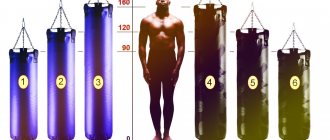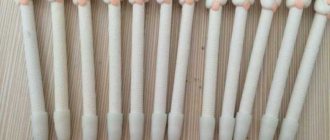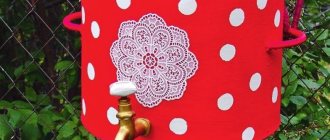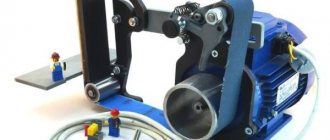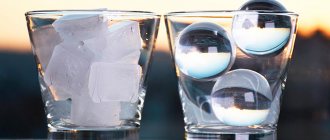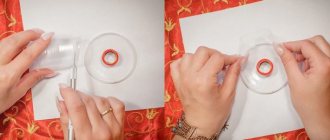Until now, some housewives make their own detergent, although hardware stores offer dozens of household chemicals. To clean the house, time-tested products are used: baking soda, vinegar, citric acid, mustard, hydrogen peroxide. Some components are good at removing dust and sticky food stains, others are good at removing old grease, and still others cope with limescale deposits. We have collected 10 recipes for the most effective detergents.
How to perm at home
Many people associate “chemicals” with small, tight curls, completely spoiled by a harmful composition, and therefore tough, like a washcloth. This kind of perm was done in Soviet times, and since they are a thing of the distant past, the stereotypes associated with the procedure also need to be gotten rid of.
Modern styling makes it possible to achieve a wide variety of effects: from African curls and vertical curls to large curls and natural waves.
At the same time, although it harms the hair, it is significantly less than the drugs our grandmothers used to make “chemistry”.
The essence of the procedure is the creation of curly strands. In cross section, straight hair is a circle, and curly hair is an oval. To change the structure of the hair shafts, persistent chemical compounds are used.
Please note that it is not easy to perform a high-quality perm at home, especially for those with long curls. You need to properly curl your hair on curlers, treat it with the preparation and fixative, and after a certain time quickly remove the rollers. It is important not to overexpose the composition on your head, then the harm from it will not be too strong.
How to wash plumbing
Plumbing fixtures get dirty the fastest. It's not just bacteria that appear on them. The most important problem for housewives is limescale and rust deposits.
Simple lemon juice will help deal with any type of plaque. One half of the citrus fruit should be squeezed out (you can use a special press). Juice is used to rub taps, sinks in the kitchen and bathroom. The composition perfectly disinfects and has a whitening effect.
Note!
Lemon juice is not fast-acting. It is applied at night and washed off only in the morning - this is how the maximum effect is achieved.
If you need to take care not about the aesthetic appearance of your plumbing, but about sanitation, vinegar will come to the rescue. 4 tablespoons are mixed with 250 ml of water and tea tree oil. The latter will be sufficient in the amount of 4-5 drops. Tea tree essential oil can be purchased at the pharmacy, it costs a penny. Thanks to the use of essential oil, the resulting solution will be stored for a long time, so it can be poured into a large-volume spray bottle in advance.
Product placement methods
You can create long-term styling using different types of curlers. You need to choose the right ones taking into account the length of the hair, the shape of the curls and the appearance of the future hairstyle. The ways of arranging products for winding depend on all this
Horizontally
The smaller the curlers and curlers, the more elastic the curls are. The technology is quite easy to master and apply at home;
Vertical
Suitable for long hair. Usually in this case bobbins and spiral rollers are used. Curling occurs from roots to ends. A variation is curling, in which the strand is first twisted into a rope and then wound around a bobbin;
Round
Optimal for owners of bobs and medium-length hair cut in a cascade. Gives additional volume and curls look natural;
Combined method
Combined method - this combines vertical and horizontal methods.
You also need to keep in mind the following features:
- You can curl only the ends or the root zone. The first method is good for girls with a triangular face shape and short haircuts. Styling at the roots is performed to correct overgrown curls or create volume.
- Curling in a braid allows you to get natural waves on medium and long strands. With this type of chem. When curling, the hair is braided up to the middle, and the ends are twisted into bobbins.
- Curls of different sizes are the result of using the “locomotive” method, in which several bobbins are twisted onto one strand.
- Corrugated curling is optimal not for the entire head of hair, but for individual parts of the hair.
Perms can be done using two methods:
- First apply the composition and then roll the curlers.
- First fix the curls and then treat them with the preparation.
For home use, the second option is preferable, since if you do not have time to quickly curl already treated curls, you greatly risk their health.
Before you decide on a home procedure, think carefully. Its advantage is obvious - lower cost compared to salon services. But there are also many disadvantages. Just look at the mistakes that can be made when performing a perm:
- Scalp irritation. If you apply too much of the drug, it may run off, causing an unwanted reaction.
- Obtaining weak, inexpressive curls after curling. There are several reasons:
- low concentration of the composition;
- the drug is expired;
- curls are curled too tightly;
- the hair is divided into too thick strands, the ends are not saturated;
- too little composition applied;
- The diameter of the curler is incorrectly selected.
- Hair fragility occurs when:
- the composition lasts for a very long time;
- the drug was used in too strong a concentration;
- poor fixation;
- the strands are curled very tightly.
- The hair changed color. Typically, this effect occurs with any hair perm, because the neutralizer lightens the strands by 1–1.5 tones. But if the contrast is striking, the following mistakes may have been made:
- curls are poorly washed before neutralization;
- a fixer with a concentration exceeding 3% was used, and the wrong holding time was chosen;
- metal products were used, which entered into a chemical reaction with the composition.
Attention! It is impossible that during the perm the room was cold and my stomach was empty. Low blood pressure can also negatively affect the result.
Pipe cleaner
Mix 1 cup baking soda, 1 cup salt and 1/4 cup cream of tartar. Measure out a quarter cup of the mixed powder and pour it into the clogged drain. Pour two cups of boiling water and let it stand for about an hour, and then run the tap water. A safe pipe cleaner that works using cream of tartar - it is a white powder that is obtained from the natural fruit acid of grape juice and is widely used both in industry and in cooking. This powder can be purchased at any supermarket in the nutrition section.
Composition selection
A drug that will curl straight hair into cute curls must be chosen very carefully, taking into account the type of hair. You cannot rely in this matter only on the advice of friends and the cost of the compositions. The wrong product can quickly destroy the hair shafts, because each of them softens the hair structure from the inside in its own way. Choosing the right drug will provide half the success.
There are these types of compositions:
- Acidic. They are relatively gentle on curls and create a soft wave close to natural. But the effect lasts 3-4 months, and such products cannot be used on obedient, thin strands. The compositions are optimal for curling coarse, thick, heavy and recently colored hair.
- Alkaline. This type of permanent has an aggressive effect on curls, opens the hair scales, making the hair porous. After this they are easy to shape. To avoid getting a washcloth instead of elastic curls, you need to correctly calculate the percentage of the chemical active substance. Alkaline is suitable for soft, normal and oily strands, but is not recommended for thick and heavy ones.
- Neutral. They have a gentle effect on hair. Thanks to allantoin, they make curls lively, natural, and shiny. Such compositions are suitable for any hair, including weakened hair. The curling effect is noticeable within 2–6 months, which is due to the individual characteristics of the hair.
Attention! There are other types of long-term styling: amino acid, silk, Japanese. But this is not “chemistry”, but a more gentle bio-perm with nutritional components in its composition.
To make it easier for buyers to figure out which composition to choose, manufacturers of cosmetic products often put specific marks on the packaging, destining the chemical product for its owners:
- porous;
- normal;
- hard;
- or dyed hair.
We recommend reading: is it possible to use chemicals on colored hair, styling features.
In addition to the composition for creating curls, you will need a fixative that will extend the “life” of the curls. It can be concentrated, then you will see the marking “1+1”. This means that the liquid must be diluted with water. The proportion is 1:1. The absence of a mark indicates that the fixative is not concentrated and is completely ready for use.
Preparations for consolidating the results of home perm are usually produced in two consistencies:
- foamy - before use, the product is well foamed and the curls are treated;
- not foamy - they are applied to each curl from the spout of the bottle.
You can make a fixative yourself, based on hydrogen peroxide or hydroperite tablets. But it is better to buy a ready-made drug, where the proportions of all components are guaranteed to be met. The main recommendation when choosing is that the product should be from the same line as the chemical composition.
Options for “light chemicals” include carving, the effect of which lasts 1–2 months. The procedure is recommended for soft hair of medium length.
Spray for smoothing wrinkles on clothes
A crease remover spray will help you out if your clothes are slightly wrinkled in your closet or suitcase. This is an indispensable tool for travelers and housewives. Instead of a factory-made spray, you can make a homemade analogue from available ingredients: pour and mix 1/4 cup of vinegar, 1/4 cup of water and 3 tablespoons of liquid fabric conditioner in a spray bottle. Hang the clothes on a hanger and spray the liquid from a distance of 20 cm until the fabric becomes slightly damp. Then straighten out the wrinkles and leave the clothes to dry.
Instruments and preparations
You need to prepare everything you need for the procedure in advance. Then at the crucial moment you won’t have to frantically search for this or that tool. Careful preparation will make the difficult process of curling your hair more organized and save time.
Curlers, hairpins
Most often for chemical Perms use plastic (plastic) products. They are lightweight, easy to attach, and do not absorb the solution. One of the popular options is bobbins, which create elastic vertical curls. Flexible boomerangs (papillotes) that form soft curls are also suitable for the procedure.
The larger the diameter of the curlers, the larger the curls. Beautiful styling is created by conical products: the curls are voluminous at the roots and smaller at the tips.
Advice. A convenient addition to the classic forms of curlers - needles or curling plates. They are slipped under an elastic band that secures the curled curl. This avoids creases.
For lovers of original solutions, manufacturers produce the following unusual models of curlers:
- hairpins or U-shaped ones - for stylish “broken” curls. They look like a stick bent in half, the ends of which are slightly twisted outward. The strands are wound on them in a figure eight;
- Olivia Garden - to give your hair extra volume and create natural curls. These curlers are attached without clamps, like a construction set, so the curls are obtained without creases;
- wide reels with clip-on fasteners. Suitable for girls with hair of any length;
- for curling waves in retro style - they look like wave-shaped plates. These curlers are used in tandem with bobbins.
Depending on the length, thickness of the hair and the desired effect, an average of 50 to 80 curlers are required per curl.
Applicator or foam sponges
Used for applying and distributing chemical composition and fixing agent throughout the hair.
Fixer
It will help to consolidate the resulting curling result. Apply to curlers after the curl has set. It is optimal if purchased together with the chemical composition.
Chemical drug
The basis of the procedure, the quality of which determines the future result. For home use, you can purchase a composition from Londawave, Estel, WELLA, and other cosmetic companies. The main thing is that it suits your hair type and structure.
Shampoo
You will need it for washing your hair before chemical treatment. Some manufacturers offer special shampoos recommended for use before the procedure.
Such products not only cleanse hair of impurities, but also soften it, making it more pliable, and also restore the structure of the hair shafts. As a rule, they are not cheap, so if your budget is limited, you can take regular shampoo.
Two bowls for preparations
In one of them you need to place the chemical composition, in the other - the fixer (if you need to whip up the foam). It is optimal if the dishes are made of glass, plastic or porcelain. The volume of each bowl is about 200 milliliters.
Warm cap or cap
It is put on the head after all the hair is wrapped in curlers and moistened with the composition. Creates a thermal effect. Most often used for acid perm. An alternative could be a terry towel.
Protective gloves
Will help prevent chemicals from getting on the delicate skin of your hands. They are required, even if the test for sensitivity and allergic reactions went well. Gloves can be polyethylene or rubber.
Special paper
Protects hair ends from damage. Facilitates the curling process. Instead of professional paper, regular parchment paper for baking will do.
Comb
You can comb your hair with a massage brush before curling. The process will require another tool: a comb with a tail. With its help, it is convenient to divide hair into zones and capture thin strands.
Crab clips
While working, it is convenient to hold individual strands prepared for winding. They can additionally fix large curlers if they are not included with the products.
Attention! The only restriction for tools is that they should not be metal. This applies to curlers, combs, hairpins and dishes. Metal will reduce the quality of the curl.
Tourniquet
Prevents the composition from getting into your eyes. Most often you can find cotton strands on sale. Also suitable for these purposes are a rolled up towel or a piece of cotton cloth with cotton wool wrapped in it.
It is important that the device reliably absorbs the flowing liquid from the hair. The tourniquet is tied in a knot at the back of the head and secured in front by hooking it with a crab onto the curlers located on the back of the head.
Special bandage
Protects the scalp from chemicals. composition along the hairline. Apply to the skin in front of the tourniquet.
Towel
Absorbs excess moisture after washing your hair.
You may also need a caring hair balm, table vinegar (for rinsing), rich cream or Vaseline, a peignoir (a cape made of waterproof fabric to protect clothes), a special bowl for the neck, where the remaining liquid will drain, a timer and a measuring cup.
NATURAL SOAP
Natural soap is made from fats (vegetable or animal) and alkali, and each country has its own brands of such soap. You need to have both solid soap (for washing powders) and liquid soap in your home.
Natural plant-based soap is included in many home recipes, both cosmetic and household, so you can immediately buy it in large quantities. For example, to wash the floors, take 2 tablespoons of liquid soap per 5 liters of warm water - this composition will remove grease and dirt, and you will not be afraid of any fumes after using it.
Stages of the procedure
Preparatory stage
Before you start directly perming at home, use the compositions to test for allergic reactions. This will save you from possible unpleasant surprises during the procedure. First, carefully examine your scalp. If there are no wounds, cuts, or abrasions, proceed as follows:
- Apply 1-2 drops of the composition to a piece of cotton wool or a cosmetic disc;
- lubricate the area behind the ear;
- leave for 10–15 minutes.
The selected drug can be used for “chemistry” if during this time the skin does not turn red, does not itch, there is no swelling or burning sensation. If at least one of the signs of an allergy appears on your face, wash off the composition with hydrogen peroxide (take a 3% solution) and then with water. Refuse the procedure or buy a new product. Test it in exactly the same way.
The next step is to check the hair reaction with the composition:
- separate a small part of the hair at the back of your head;
- apply a chemical;
- After 2-3 minutes, check: if the hairs break, the concentration of the composition is high for you. Dilute it with water in a ratio of 1:1 or 1:1/2, repeat the test, choosing another strand.
It happens that as a result of the test, the hair becomes brittle and covered with a gray coating. In this case, long-term styling is contraindicated.
Attention! You can’t do “chemistry” on bleached hair, even if dry hairs break after being pulled. You can also place a small strand of hair into the composition as a test sample. Hair that after 10 minutes has lost its strength and begins to tear needs treatment, not a perm.
After successfully passing the tests, wash your hair. Do not massage the skin: sebaceous deposits will prevent drying. You can replace shampoo with tar or laundry soap. The alkali, which is present among their components, makes the outer layer of hair loose and susceptible to solution. Dry the strands lightly with a towel and comb with a wide-tooth comb.
“Chemistry” looks beautiful on hair cut in a cascade. But when shortening the strands, remember: curling will additionally “take away” a couple of centimeters of length.
Perm
How to properly perm prepared hair:
- Divide your head into zones: back of the head, sides, crown.
- Having selected one section, remove the rest of the hair using crab clips.
- Curl damp hair with rollers. Perm using the chosen method (vertical, horizontal). To form good curls: select a strand 0.5 centimeters thick; comb it; if you use paper, place the tip of a curl into the sheet folded in half; Pull your hair at a 90° angle to your head; place a bobbin (or another type of roller) under the edge of the strand; twist the curl to the roots, helping yourself on both sides with your thumb and forefinger. Hold the curlers in the middle; curl evenly, but not too tightly, otherwise the composition will not saturate the hair completely; secure the curlers with an elastic band or clip; repeat the same with other strands. It is optimal if they are all the same in thickness.
- Medium and long hair can be curled starting from the middle part of the back of the head: move to the neck and then to the forehead. Another option is to go from the back of the head to the top of the head. It is more convenient to curl short hair from the crown to the back of the head.
- When you have rolled all the curlers, lubricate the skin along the growth line with rich cream or Vaseline. You can instead wrap a special bandage around your head.
- Tie it with a tourniquet.
- Put on a protective cape and gloves.
- Pour perm compound into one of the bowls. The amount depends on the length of the hair: for short hair – about 50–60 milliliters, for medium – about 120, for long – from 150.
- Distribute the solution over curled curls, starting from the back of the head, then along the crown at the temples, along the growth line and on the sides. Work quickly, but don't miss a single bobbin, move consistently. For convenience, use a sponge or applicator.
- When finished, put on an insulating cap or polyethylene cap.
- Wrap a terry towel on top.
- After 15 minutes, check the degree of readiness of the curls. To do this, remove the towel, cap and unwind 4 curlers: on the back of the head, crown and sides. Do this with gloves!
- If the curls have just begun to form, tighten the rollers and wait for the maximum time specified in the instructions. Check the quality of the curls periodically.
- When you see that the curls have become elastic, rinse the composition with warm water. Do not remove the curlers, but screw back the ones you used for testing.
- Remove excess moisture by patting your hair with a towel.
- Using a second sponge or applicator, spread half of the fixative over your hair. Nuances: if you make it at home, prepare it immediately before use; Pour the foam into a bowl and beat it. All you need is foam; Dispense non-foamy directly from the spout of the bottle.
- After 7-10 minutes, remove the curlers from your hair.
- Apply the second part of the fixative to the curls.
- After 5 minutes, rinse your hair and then rinse. To do this, add 130 milliliters of vinegar to 4 liters of water. This amount is enough for long hair. For medium and short ones, halve the proportions. The water should be warm at all stages.
- Lightly knead the curls with your hands and dry them with a towel. You can't use a hairdryer: your hair will look like a dandelion.
- Apply a balm or product to your hair to restore the structure of the hair shafts.
- Style with curlers.
- Wash all tools with hot water.
When doing long-term styling outside of a salon, it is best to hire an assistant.
Repellent
Insect spray will replace a natural repellent - citronella essential oil (you can buy it at the pharmacy). This bright, pleasant citrus-like aroma effectively repels almost all insects. Citronella will help eliminate strong kitchen odors and even get rid of tobacco smoke. Using the oil is simple: add 3-5 drops to the aroma lamp for every 15 square meters of room.
Safety precautions
- Make sure that chemicals do not come into contact with your skin or eyes.
- Protect clothing from drops of the composition and fixative.
- Be sure to close bottles of curling products, otherwise a chemical reaction may occur.
- Wear gloves - this is one of the simplest safety rules that should not be neglected.
- Follow the technology strictly. Proceed to each new stage of curling after completing the previous one.
- Keep the preparations on your hair exactly as long as indicated in the instructions! By increasing the time, you will not make the curls better, but you will definitely ruin your hair.
- Do not be distracted while working by extraneous matters, snacks and smoke breaks.
- Do chemistry in a room with good ventilation.
- Make sure that all medications have a good expiration date. This is especially true if you bought the composition in advance.
- Reschedule the procedure if there are wounds, abrasions, pimples, or dandruff on the scalp.
- Do not do long-term styling during menstruation, during periods of exacerbation of chronic illnesses, and if you are taking antibiotics or hormonal drugs.
- Absolute contraindications to perm are pregnancy and breastfeeding.
Attention! If your hair is falling out, is very weakened, or has recently been dyed (including with henna or basma), the procedure should also be postponed.
Perming at home is a risky undertaking, especially if you do it yourself. The procedure is long and labor-intensive. When starting it, it is important to take into account all the nuances: choose the right composition, prepare the necessary tools, carefully curl the curls, do not overexpose the solution, do not forget about safety rules, and much more. Of course, professional craftsmen are also not immune from force majeure, but without the appropriate experience, the likelihood of making a mistake increases.
If your budget allows, it is better to entrust the creation of curls to a hairdresser. Many of them go to the client’s home and charge less for work than in a salon. If you still decide to experiment with “chemistry” on your own, prepare and test your hair and skin well, and perform all the steps step by step. Take a gentle composition first. The curls may not last as long as you want, but your hair will suffer less. And don’t forget that after chemo. Permed hair needs special care, with which you will take care of your hair and prolong the effect of the procedure.
Learn more about long-term hair perming with the following articles:
- carving or bio-curling of hair - which is better, what is the difference in styling;
- what is the difference between bioperm and perm, which one is better to choose;
- what is the difference between carving and perm;
- chemical hair perm “Angel Curls” from WELLA, composition and benefits;
- features of performing chemistry on short hair;
- how to apply chemicals to long hair;
- what type of perm to choose for medium hair.
Useful tips
Fans of homemade dishwashing products will find the following tips helpful:
- To eliminate the smell of laundry soap, you should replace the hot water in the recipe with an infusion of pine needles or dry zest.
- If home remedies are used occasionally, then you don’t have to prepare a gel from soda or mustard, but pour the dry powder directly onto a sponge.
- To quickly wipe off carbon deposits or a thick layer of fat, you need to boil the dishes with grated soap, soda and PVA glue (30-40 g of each component per 1 liter of water).
- When washing lightly soiled glassware, you need to soak it in warm water with the juice of half a lemon, and then rub it with a clean sponge without detergent.
Before boiling and soaking, be sure to remove the wooden handles from the dishes.
HYDROGEN PEROXIDE
This cheap product that can be found in any pharmacy is a true champion in the matter of cleanliness. It whitens and disinfects no worse than bleach, and is much safer than the latter.
All these products in a variety of combinations can completely replace purchased household chemicals, and the result will be no worse. And your family budget will thank you, since in terms of the cost of one cleaning, cleaning with natural products is much cheaper than using purchased products.
However, the most valuable thing is not cutting costs, but the health of you and your household. And in this sense, the transition to household household chemicals is completely justified; you just need to deal with this issue once and for all.
________________________________
Did you find this post helpful? You may also be interested in my book “Household NON-chemicals”, in which I have collected many natural recipes for cleaning and disinfecting your home.


